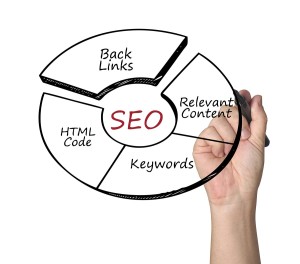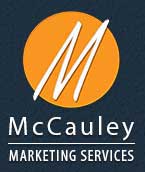Seven Simple Steps to a Search Optimized Website
 In the age of modern internet marketing and non-stop social media engagement, maximizing a website’s ranking on search engines like Google could not be more vital. According to Retailing Today, eighty-one percent of consumers go online before heading out to a store, and this doesn’t even take into account the rapid rise of purely electronic commerce. But figuring out specifically how to get your website on the first page of search results, can be extremely complicated. Google, which alone commands an estimated 65% to 85% of the search market, says that it looks at roughly 200 distinct ranking factors when deciding who to rank at the top of search results and their intricate search algorithm changes regularly. To help get you started, here are seven simple steps you can follow to keep your website search optimized.
In the age of modern internet marketing and non-stop social media engagement, maximizing a website’s ranking on search engines like Google could not be more vital. According to Retailing Today, eighty-one percent of consumers go online before heading out to a store, and this doesn’t even take into account the rapid rise of purely electronic commerce. But figuring out specifically how to get your website on the first page of search results, can be extremely complicated. Google, which alone commands an estimated 65% to 85% of the search market, says that it looks at roughly 200 distinct ranking factors when deciding who to rank at the top of search results and their intricate search algorithm changes regularly. To help get you started, here are seven simple steps you can follow to keep your website search optimized.
Use Keywords Effectively: Keywords help Google understand what your content is all about, but too many can be just as harmful as none at all. In order to be most effective, a title’s keywords must match the content and search terms. Sprinkle them sparingly thru the main content as well for optimal results.
Use Reliable External Links: Authority matters a great deal to Google search algorithms, and linking your content to trustworthy outside sources can boost your Search Engine Optimization while making your website part of a larger, critically-engaged community of experts.
Use Internal Links Often: Whether you are linking to other websites that you manage or to specialized areas within the same site, internal links help drive traffic to your page, even if the content is older and no longer attracts the attention it once did.
Keep Your URL’s Streamlined: If your URL structure is clogged up with symbols, numbers, or meaningless letters, it can make pages less recognizable to Google and diminish your SEO ranking. It may be necessary to change the URL slug in the permalink to keep your links clean and efficient.
Make the Most of Meta Data: Meta-descriptions, meta-titles, and keyword tags allow readers, and Google, to identify the kind of content that a link might lead them towards. More trustworthy links generate more traffic, so use tags wisely and don’t forget to name images well.
Use Content that Loads Fast: A slow-loading site can drastically increase your bounce rate, so make sure your site and any advertising on it are optimized for your platform. HTML5 tends to load faster and is more search engine friendly than older programs like Flash or JavaScript, and don’t forget to make regular updates if you are working on a newer responsive platform.
Publish Frequently: Google’s web crawlers tend to visit websites more frequently when they have new content publishing frequently and at regular intervals. This is just one of the many reasons why regularly posting articles to your blog is so important. Take advantage of the opportunity to give your audience the most up-to-date experience possible.
Some sources estimate that as many as 95% of web users stop searching after they click on a page one result, so earning a page one ranking can make all the difference. If you are interested in learning about the other ways that McCauley Marketing Services can help you stay ahead of the curve and keep your brand optimized, contact us to schedule a meeting. For all the latest marketing and advertising tips, follow us on Facebook, Twitter, and Google+.
